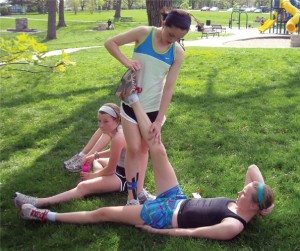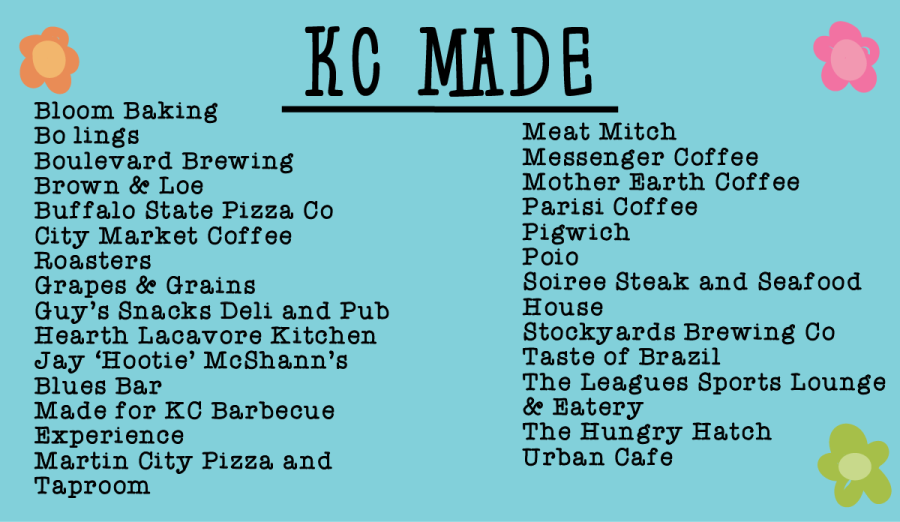ÂÂ
ÂÂ
ÂÂ

ÂÂ
by Lane Maguire
She feels a sharp pain near the top of her kneecap. The pain increases when she runs and walks up and down stairs. Ice and Advil ease the pain, but do little to cure this STA student’s knee injury.
‘I was worried because I thought that if I kept running with my knee hurting, I would damage it even more,’Â said freshman Courtney Coppinger, who suffers from IT (iliotibial band) syndrome.
Many STA athletes suffer from knee pain, including Osgood-Schlatter’s disease, IT band syndrome, and Patellar tendonitis. Continuous pressure on the knee from physical activities can infer with athletics and lead to possible long-term damage.
‘[Anterior knee injuries] are very common, more so in girls than in boys, but are probably the most common causes of knee pain that I see in high school athletes,’Â said Dr. John Vani, an orthopedic surgeon specializing in sports medicine.
Knee pain, according to Dr. John P. Fulkerson in his 4th edition book ‘Disorders of the Patellofemoral Joint’Â, is most commonly the result of overuse, weak or unconditioned muscles, or change in the intensity of workout routines.
Freshman Hannah McCausland, who suffers from patellar tendonitis, believes that ‘going from a little to a lot of running’Â brought on her knee pain.
According to Dr. Jonathan Cluett in his article ‘Patellar Tendonitis’Â on about.com, Patellar tendonitis or ‘jumper’s knee’Â occurs when the patellar tendon and the tissues around it become inflamed.
‘The pain is under my kneecap,’Â McCausland said. ‘It hurts when I bend my knee and press on it.’Â
Knee pain usually increases when walking up and down stairs or when the knee is bent for a long period of time, according to Fulkerson.
Sophomore Taylor Twellman describes her knee pain as an ‘aching right below the knee all the time but mostly when running or going up and down stairs.’Â
Twellman suffers from Osgood-Schlatters disease, a knee injury that affects mainly athletes in their early teenage years that are experiencing growth spurts.
‘I went from about 5’0’Â to 5’7’Â the summer going into eighth grade,’Â Twellman said.
Both Twellman and McCausland now wear knee braces when participating in physical activities.
‘Sometimes [a knee band or brace] will change the forces on the patella slightly and take away the excess force that is causing the pain,’Â Vani said.
Although the knee braces help Twellman and McCausland, the pain still persists.
‘If you’ve tried some stretching, icing, and [the pain] lasts for more than about a week, I would consider seeing a doctor,’Â Vani said.
Most doctors and trainers will recommend stretching as one of the primary steps of treatment and prevention. Coppinger believes that her knee pain is a result of ‘not stretching enough.’Â
The pain associated with IT band syndrome occurs when the iliotibial band, which runs from the hip to the knee, becomes tight and rubs against the outside of the knee.
‘I feel a sharp pain at the top of my kneecap,” Coppinger said. “My hip flexor hurts a lot because it is really tight and [the knee and the hip flexor] bind together.”
Coppinger now incorporates several stretches and exercises into her daily routine.
Dr. William R. Post discusses knee pain in his article in the December 2005 issue of the Journal of the American Academy of Orthopaedic Surgeons entitled ‘Anterior Knee Pain: Diagnosis and Treatment.’ Instead of stopping exercise altogether, Post encourages those with knee pain to modify physical activity so that the pain is reduced and then to slowly increase activity as pain allows so that conditioning, flexibility, and muscle strength are not lost.
‘Let pain be your guide to activities,’Â Vani said. ‘So if it hurts, don’t do it.’Â





